Course #:
A05
Course Length:
5 Days
Course Price:
$725
Course Dates:
Contact Us for Details
Course Description
This FAI-compliant course is part of the Principals of Contract Pricing curriculum required for all contracting professionals. It addresses all facets of cost analysis and provides the student with the knowledge, skills and abilities needed to conduct cost analysis.
The course employs a combination of lecture-discussion, case study, and practical exercise techniques to provide training to cover the comprehensive set of learning objectives established by FAI. Students learn which of many approaches to cost analysis should be applied to different pricing situations. In addition, students will have the opportunity to use such approaches to answer particular pricing questions.
The target audience for this course consists of members of the contract specialist (GS-1102) career path. Other personnel involved in contract pricing decisions would find the course helpful.
ACE Credit Recommendation
In the lower division baccalaureate degree category, 2 semester hours in Business Administration, Federal Acquisition, Public Administration, Procurement Management, or Purchasing.
Prerequisites
Acquisition Planning I, Contract Formation I, Contract Administration I, and Price Analysis
Course Objectives
Upon successful completion of this course, the student will be able to:
- Obtain and analyze cost or pricing data or information other than cost or pricing data
- Determine allowability of cost
- Conduct market research for cost analysis
- Define and evaluate contractors plan for accomplishing work
- Use regression analysis and improvement curves
- Analyze direct and indirect cost
- Analyze facilities capital cost of money
- Analyze profit or fees
- Prepare a negotiation positionCourse Content
Course Content
Lesson 1: Cost and Cost Analysis Defined
- Define contract cost as used in contract pricing.
- Identify considerations necessary for cost analysis.
- Compare cost estimating systems to cost accounting systems.
- Describe cost estimating methods.
Lesson 2: Obtaining Offeror Information for Cost Analysis
Given market research:
- Determine whether cost or pricing data are required.
- Describe the process for obtaining required cost or pricing data.
- Identify the elements necessary for the proper execution of the certificate of current cost or pricing data.
- Recognize the need for pricing information other than cost or pricing data.
- Solicit information from offers required or otherwise necessary to analyze proposed costs.
Lesson 3: Allowability
Given cost proposals, market research, and the FAR:
- Identify the five factors to consider in determining cost allowability.
- Research the specific cost principles in FAR 31.205.
- Classify proposed costs as allowable, unallowable, or allowable with restrictions.
Lesson 4: Data Collection
Given market research (including acquisition histories), cost proposals, and input from the acquisition team:
- Extract relevant data from the market research.
- Develop requests for technical, audit and field pricing support.
- Critique the findings of technical, audit and field pricing reports.
Lesson 5: Evaluating the Proposed Work Design
Given market research (including acquisition histories), cost proposals, and the findings of technical, audit and field pricing reports:
- Identify the offeror’s planning assumptions, including contingencies.
- Develop positions on the proposed work design.
- Identify the level of risk inherent in the offeror’s cost estimate and methods for mitigating risks.
Lesson 6: Direct Material Costs
Given market research (including acquisition histories), cost proposals, the findings of technical, audit and field pricing reports, and the government’s position on the proposed work design:
- Develop prenegotiation positions on the material mix, summary level cost estimates, detailed quantity estimates, unit price estimates, and subcontracts.
Lesson 7: Direct Labor Costs
Given market research (including acquisition histories), cost proposals, the findings of technical, audit and field pricing reports, and the government’s position on the proposed work design:
- Develop prenegotiation positions on the direct labor mix, direct labor hours, and labor rates.
Lesson 8: Other Direct Costs
Given market research (including acquisition histories), cost proposals, the findings of technical, audit and field pricing reports, and the government’s position on the proposed work design:
- Develop prenegotiation positions on other direct costs.
Lesson 9: Indirect Costs
Given market research (including acquisition histories), cost proposals, the findings of technical, audit and field pricing reports, and the government’s position on the proposed work design:
- Identify the elements of an indirect cost rate.
- Define “indirect cost pool”.
- Relate the allocation base(s) to indirect cost pools.
- Define the “cost allocation cycle”.
- Examine proposed indirect costs to assure compliance with FAR 31.2.
- Calculate a forward pricing rate.
- Apply the forward pricing rate to develop prenegotiation positions on indirect costs.
Lesson 10: Facilities Capital Cost of Money
Given prenegotiation positions on elements of cost:
- Recognize elements affecting facilities capital cost of money.
- Identify the steps to calculate the facilities capital cost of money.
- Calculate facilities capital cost of money.
Lesson 11: Profit or Fee
Given market research (including acquisition histories), cost proposals, the findings of technical, audit and field pricing reports, the government’s position on the proposed work design, and prenegotiation positions on elements of cost:
- Identify the factors affecting profit/fee analysis and develop a prenegotiation position on profit or fee using the appropriate structured approach.
Lesson 12: Preparing for Negotiation
Given market research (including acquisition histories), cost proposals, the findings of technical, audit and field pricing reports, the government’s position on the proposed work design, prenegotiation positions on elements of cost and profit, and an independent assessment of the proposed price based on price analysis techniques:
- Identify any differences between the results of cost analysis and price analysis.
- Recognize how cost drivers, cost risk, and available tradeoffs with contract requirements affect the prenegotiation objective.
- Identify key pricing elements in prenegotiation objectives.
- Describe the documentation required to support the government’s prenegotiation position.
- Develop an overall position on the proposed price.

